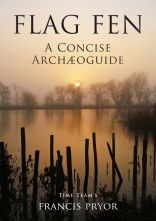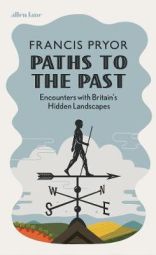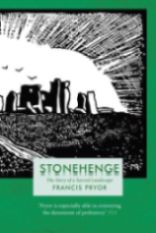I’ve just returned from a day’s visit to the Cranborne Ancient Technology Centre, in deepest rural Dorset. It’s a wonderful place. Everyone, even slightly interested in the past, should pay it a visit. To my huge shame, the last time I went there was back in 1989, would you believe, when I was filming a six-part series for BBC-1 Children’s Television, Now Then. My job was presenter. Now there’s an old saying in broadcasting that goes: ‘Never work with children, or animals’, but in that series we had to work closely with (often) both – and for hour after hour. But they proved the old saying rubbish. No, it was wonderful: they almost never made mistakes or got things wrong. That was usually my job. The series was produced by David Collison, a distinguished Director with the BBC’s long-running Chronicle strand. David had to have infinite patience and the results were, I still believe, very memorable. Our show went out on the days when Blue Peter wasn’t being screened and I still sometimes get approached by people, now in their late forties and fifties, who watched us when they were kids. I think we were at Cranborne for about four days and I can remember eating strange things, making fire with a dry stick and washing my hands with soap-wort. I did it again on my last visit and the herb’s clean, fresh smell brought the memories tumbling back. Maybe I’ll try growing it in the veg garden next year.
The place had been transformed since my last visit. The Iron Age round-house we had worked in had been entirely rebuilt. And there were some remarkable new structures. As we entered we were confronted by a superb Viking long-house with the distinctive curved roofline, so reminiscent of a long-ship.
Behind it was a medieval granary and beyond that a huge circular round-house with an earthen roof. This large building was loosely based on some examples excavated during the last war on the Isle of Man. These were superb excavations carried out by one of the greatest, and most innovative, of modern archaeologist, Professor Gerhard Bersu. By a happy (as it turned out) coincidence, Bersu had been invited to Britain by the Prehistoric Society to conduct excavations at Little Woodbury, in Wiltshire. This work was fundamental to our understanding of life in an Iron Age house. When war broke out in 1939 Bersu and his wife were interned as ‘enemy aliens’ on the Isle of Man, where they were found gainful employment researching into that uniquely important island’s past. Sometimes I wonder whether we’d be as enlightened to similar alien internees today? Given the calibre of the image-conscious, humourless people who have come to dominate our public life, I rather doubt it.
Anyhow, when I got home I re-read Bersu’s remarkable report (Three Iron Age Round Houses in the Isle of Man, published by The Manx Museum and The National Trust in 1977). During the meticulous (and very protracted – but then, time wasn’t a problem as it is today) dig, Bersu observed that there were a few pre-Iron Age flints lying above the Iron Age layers. In theory this was impossible, unless, as he argued, those flints had somehow been incorporated in the roof, which subsequently collapsed. And the only reasonable explanation for flints on a roof would be in turf or soil that had been placed there, as a substitute for thatch. We know from modern examples (we have one at Flag Fen) that turf roofs can work well, provided they aren’t too steep (35 degrees is ideal).
Bersu died in 1964 and it was a shame that the editorial process for the Man digs took so long, but in the end it was worth the wait. Even now, the book remains peerless. Which reminds me: as we approach the run-up to Christmas I’ll be posting short discussions of books that I’ve read recently and enjoyed. If you decide you’d like to buy one or (even better) all of them, can I ask that you go to an independent book-seller? Like many authors, I’m really worried about the book-trade in Britain, which played such a large part in my younger life. Small local bookshops were wonderful places to free the imagination and let one’s spirits soar. So much better than a flat, lifeless screen…
Now back to Cranborne. In a corner of the site sits a large oak frame which supports a remarkable water-lifting device – in effect a pump. This was found during excavations in Gresham Street, London in 2000 and was then reconstructed. The original dates to AD 63, when the City of Londinium was rebuilt, following the disastrous fire of the Boudiccan revolt, three years previously. I can report that it’s still in excellent working-order. And it was good to see Phil Harding pushing his weight. As you might have guessed, it’ll feature in a Time Team compilation film early next year.



















